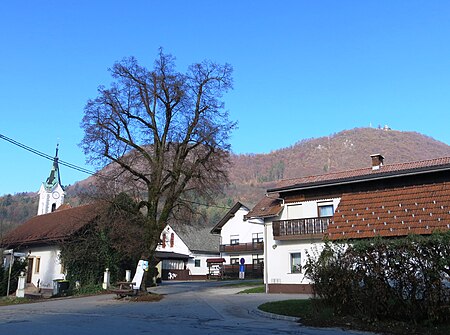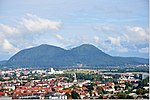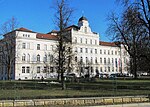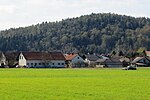Tacen
Localities of LjubljanaŠmarna Gora District

Tacen (pronounced [ˈtaːtsən]; in older sources also Tacenj, German: Tazen) is a formerly independent settlement in the northwest part of the capital Ljubljana in central Slovenia. It is part of the traditional region of Upper Carniola and is now included with the rest of the municipality in the Central Slovenia Statistical Region. It includes the hamlets of Na Grškem, Sige, V Bregu (or Breg), and Šmarna Gora.
Excerpt from the Wikipedia article Tacen (License: CC BY-SA 3.0, Authors, Images).Tacen
Ulica Ivice Pirjevčeve, Ljubljana Tacen
Geographical coordinates (GPS) Address Nearby Places Show on map
Geographical coordinates (GPS)
| Latitude | Longitude |
|---|---|
| N 46.118211111111 ° | E 14.469097222222 ° |
Address
Ulica Ivice Pirjevčeve
Ulica Ivice Pirjevčeve
1211 Ljubljana, Tacen
Slovenia
Open on Google Maps









